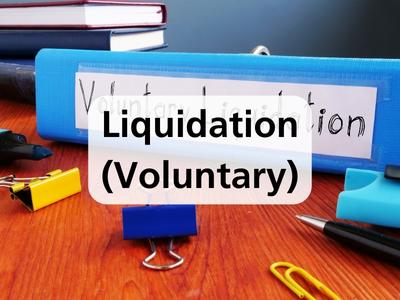Voluntary Liquidation Explained
 Voluntary liquidation is a process started by a business itself, signalling its decision to cease operations and dissolve the company, a move that shareholders approve. It happens when the company’s leaders determine there’s no justification for the company to carry on its operations. Unlike court-ordered liquidation, it’s not a compulsory action enforced by a judge.
Voluntary liquidation is a process started by a business itself, signalling its decision to cease operations and dissolve the company, a move that shareholders approve. It happens when the company’s leaders determine there’s no justification for the company to carry on its operations. Unlike court-ordered liquidation, it’s not a compulsory action enforced by a judge.
The purpose of voluntary liquidation is to wind up the company’s operations and settle its financial obligations methodically and promptly while paying back creditors in order of precedence.
Understanding Voluntary Liquidation: What and How?
Voluntary liquidation allows a business to end its operations, sell off assets, and dismantle the corporate structure while paying debts owed to its creditors according to their priority.
It comes into play when company shareholders or owners vote for a resolution to stop the business operations; hence it’s characterized as voluntary liquidation. It can proceed with just the shareholders’ approval.
Reasons for Opting for Voluntary Liquidation
- Infeasible operations or adverse business conditions.
- A voluntary liquidation, even though it’s not mandatory, can be a viable choice for companies facing unsustainable operations or unfavourable business conditions. As an example, an oil-producing company with high costs might anticipate a period of low oil prices.
- Even if they’re not officially bankrupt, the company might decide to liquidate voluntarily.
Tax Benefits
Voluntary liquidation can be prompted by potential tax benefits associated with shutting down, reorganizing, or transferring assets to other firms in exchange for shares in the acquiring company. This often benefits the company being acquired as the transferred equity enjoys a more favourable tax treatment.
Special Purpose
Sometimes, companies operate for a predefined timeline and for a specific purpose. For instance, a Special-Purpose Entity (SPE) or a Special Purpose Vehicle (SPV) is a sub_company created solely for managing financial obligations and isolating risk. When these companies have served their purpose, they might decide to liquidate voluntarily.
Exit of the Company Founder or a Key Executive
Often, when an important member, perhaps the founder, decides to leave the organization, voluntary liquidation might ensue. If the company’s founder decides to exit and shareholders choose not to continue business, the company may shut down. Usually, a company established and grown by a certain individual might not function the same way upon their departure.
Process of Voluntary Liquidation
Voluntary liquidations can commence when a particular event triggered by the board of directors occurs. At this point, a liquidator is appointed.
A liquidator is an independent entity engaged to sell off a company’s assets in a liquidation process. These assets are typically sold for cash or its equivalents in the open market. The liquidators have the legal empowerment to act in various capacities on behalf of a company.
When a company decides to liquidate, voluntarily or otherwise, it will enlist a third-party liquidator to sell its assets. Liquidators, also known as trustees, effectively possess legal powers to sell assets and oversee a company’s liquidation.


